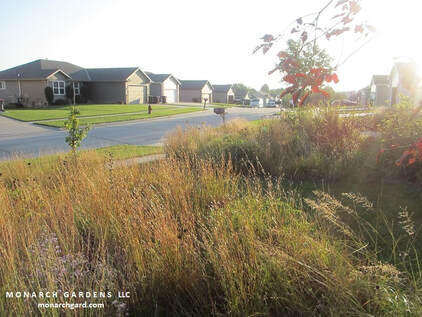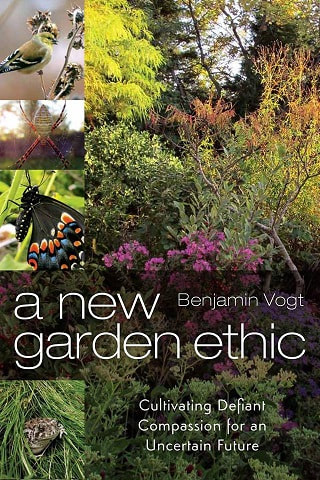So yes, you have to research plants. You can't just trust a plant tag or even a sales person, especially because when you put a little legwork in you learn way, way more. So let's say you've just picked up a pale purple coneflower, Echinacea pallida. The plant tag likely says it needs full sun and dry soil. That tag can't fit enough pertinent info on there to help you garden with more success, such as: what TYPE of soil; how it actually performs in various conditions; what wildlife it literally grows. Is it even native to the local ecoregion? Go online and type a search in for "Echinacea pallida." Websites that I've found the most helpful in learning about plants here in flyover country include:
Prairie Moon Nursery
Prairie Nursery
Illinois Wildflowers
Missouri Botanical Garden
Lady Bird Johnson Wildflower Center
Once you've read about the plants from these sites -- and even a local / regional book, such as Field Guide to Wildflowers of Nebraska and the Great Plains -- you'll know more than most folks and you can plant with much more ecological confidence.
So, what are some of the key aspects of a plant you should be looking for when creating your small urban garden?
1) Reproduction -- does it spread by seed or rhizome or both, and how aggressively?
2) Root Growth -- does it need room to spread or can it be happy with a limited vertical window?
3) Foliage Density -- the larger the leaf and more profuse the number, the more soil is shaded. That's good for suppressing weeds (as are plants with fibrous root zones)
4) Mature Size -- for your specific site conditions. A specific plant in full sun, plenty of moisture, and loamy soil performs much differently than when placed in gravelly loam or clay or part sun even if they adapt to both sites. Echinacea pallida is a good example -- tall and floppy in rich, moist soil where it's by its lonesome, but more suited to leaner soils with plant competition.
5) Flowering -- what time of year does it flower? Humans want flowers every day of the year -- and so do adult pollinators -- so plan for bloom succession in your garden using a variety of plant species (including grass and sedge).
6) Winter Interest -- does it have any special autumn and winter physical characteristic you might want to plant for?
7) Host Services -- which species of insects and bugs use the plant as a host for their young? Which use it for nectar and pollen? How do other fauna use the plant?
Learning about these seven aspects of a plant will help you plan the garden. For example, in 100ft you don't want more than one aromatic aster (Symphyotrichum oblongifolium) since it tends to act like a small shrub getting 2-3ft wide and tall on average, especially in richer soils. On the other hand, you want more than 2-3 nodding onion (Allium cernuum) because the bulb takes a while to reproduce and the plants remain fairly inconspicuous for years -- so a grouping of 7-11 might be a good idea.
If you want flower color ASAP in year one -- as well as weed suppression -- consider sowing annual forbs alongside the sideoats grama; plains coreopsis (Coreopsis tinctoria) or clasping coneflower (Dracopis amplexicaulis) work well and fade out over time as perennials get going. A lot of garden designers have started using the biennial black-eyed susan (Rudbeckia hirta) as a nurse crop and weed competitor with its good basal foliage and self sowing habit; plus it all but disappears after 3-4 years as other plants fill in densely.
So in a 100ft garden in 50% to 100% sun, medium to dry clay soil, a plant list -- massed by species -- for much of the Midwest and east might look like this (adjust for your region):
5 prairie alumroot (Heuchera richardsonii) -- mid spring bloom, dense / large-leaved basal foliage, tends not to spread
3 dwarf wild indigo (Baptisia minor) -- mid spring bloom, open shrub-like foliage, taproot, black seed pods, tends not to spread, slow to establish
7 pale purple coneflower (Echinacea pallida) -- early summer bloom, taproot, black seed heads, light self sowing
5 purple prairie clover (Dalea purpurea) -- clumping, thin foliage early-summer bloomer, light self sowing
11 nodding onion (Allium cernuum) -- short clumps of midsummer flowers, upright / thin foliage, bulbs slowly reproduce
5 dotted blazingstar (Liatris punctata) -- thick clumps of mid to late summer flower spikes, corm (tubor-like root), tends not to spread
3 zigzag goldenrod (Solidago flexicaulis) -- early fall bloom, slowly spreads by rhizome if adequate competition
1 aromatic aster (Symphyotrichum oblongifolium) -- mid to late fall bloom, shrub like habit that shades out soil
If you askew wood mulch and weeds (wood mulch does NOT prevent weeds), place 50-75 sedge in the space. Or you can sow in a few handfuls of sideoats grama and some of the aforementioned annual and biennial forbs in spring to early summer.
The key to the plant list and design is this -- to mass the perennial forbs listed above. People scared of plants not lined up like a firing squad tend to view massing / clumping as a more legible and intentional space. Coincidentally, pollinators flying overhead can easier spot a clump of coneflowers instead of just one or two. And by the way, do not cut down this garden in fall or winter.
What else can be said for this plant list? Zigzag goldenrod can be aggressive in the right conditions (loamy soil, less competition), but in a dense planting on 12 inch centers -- and many of those plants have similar root zone habits -- it's kept more in check while providing what we and pollinators desire. The blazingstar and onion will be happy since their corms and bulbs occupy their own zone in the soil. Indigo and coneflower will put down taproots below firbous grasses. There's a lot to consider but here's a secret -- observing these species in the wild (in prairies) will tell you a lot about IF they will grow together and HOW they will grow individually. When using plants that come from the same wild community we are one step ahead of the game in creating a sustainable space that's beautiful to both people and wildlife equally.
So what do you think? Is this helpful? Tell us what you've learned and what you might try differently.








 RSS Feed
RSS Feed

